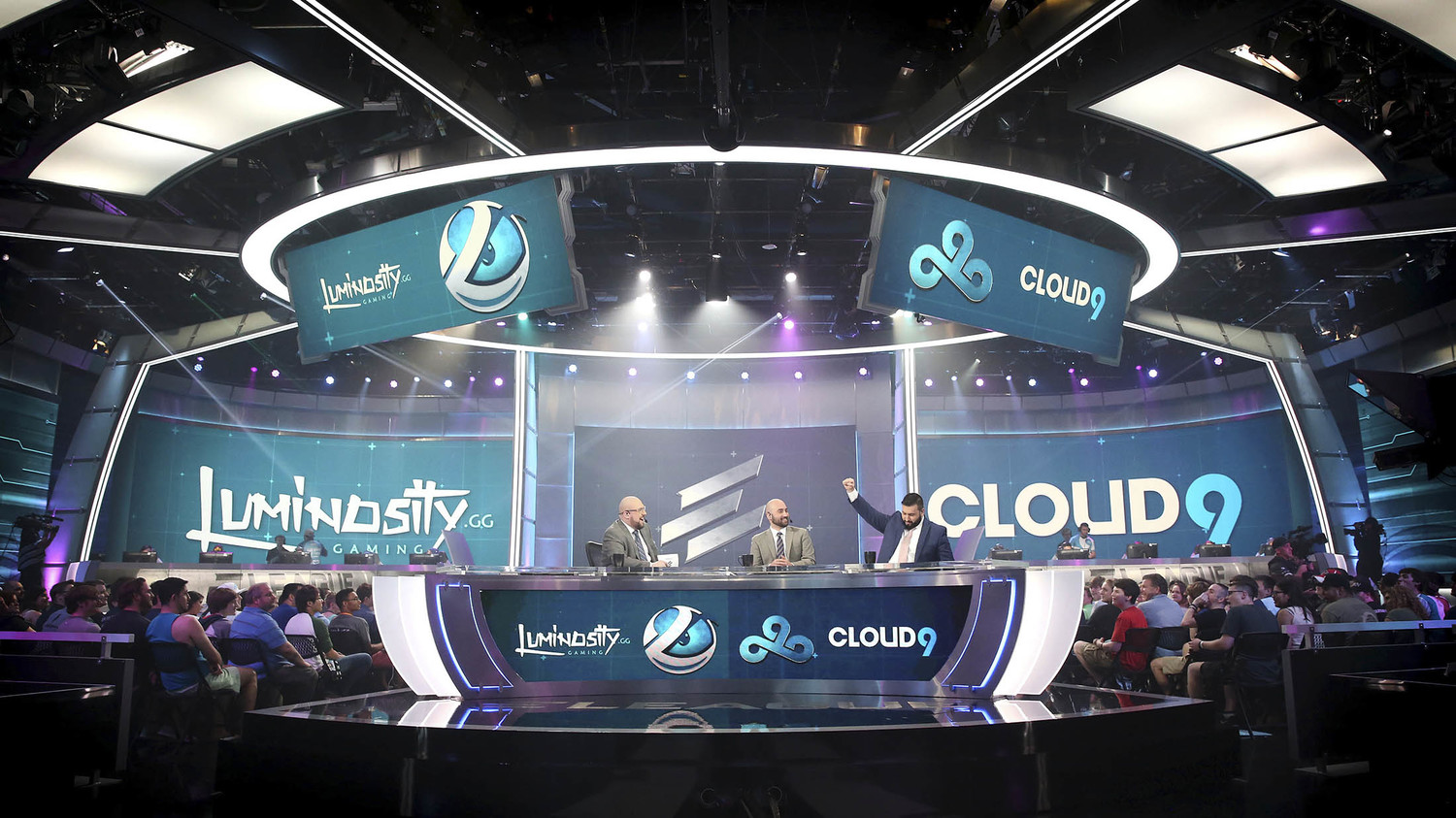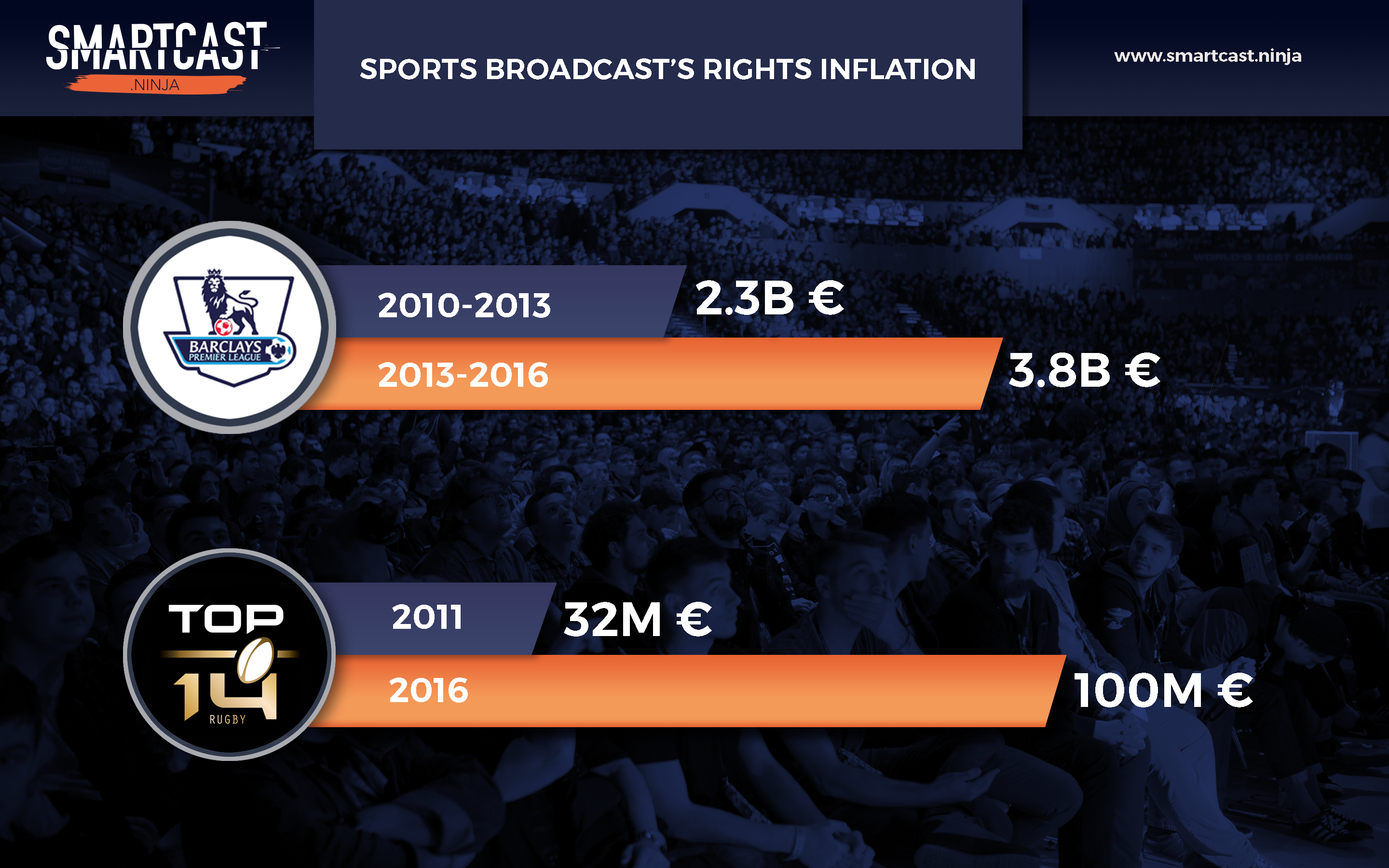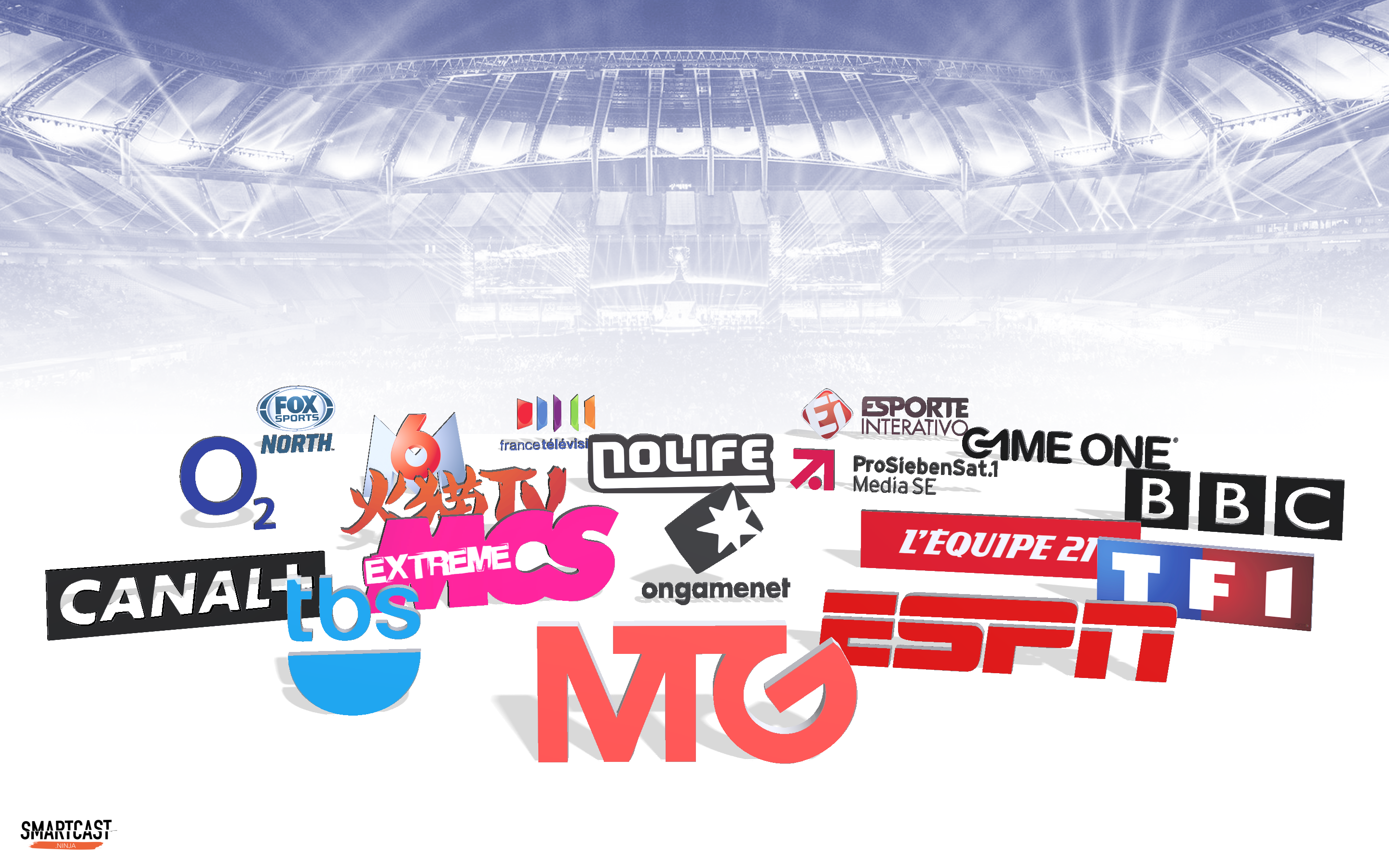Last year we announced the arrival on television of electronic sports and the advent of the contests’ broadcasting rights. More than a natural growth toward new broadcasting channels, we are attending a real e-sport conquest by the traditional broadcasters.
As far as we know, there would be currently more than 19 TV channels worldwide positioning themselves as regards e-sport. This includes both long-standing stakeholders such as OGN in South Korea as well as firms more recently established but just as powerful, such as MTG, ESPN or TBS. France is a particular case as, today, nearly 10 channels (if not channels groups) are seeking to gain ground. TF1, France Télévision, Canal+, M6, L’Équipe21, MCS, NoLife, Game One, all of them are entering the race. SmartCast carries out a situational analysis as regards the French scene.
In France, there are the ones who are interested in the phenomenon and the ones who carry experiences. Last March, TF1 transmitted the finals of the FIWC (editor’s note: Fifa Interactive World Cup) on its website MYTF1. Since then, the trend is gathering pace and, on June 1st, the group disclosed its new “e-sport” strategy to an assembly of digital and marketing professionals. We learn that the group’s subsidiary, TF1 Publicité, partnered with Bang Bang Management and Glory4Gamers. These three entities would be thinking about creating an historical event for 2017. “We want to organise a general public-focused event, with a very strong marketing, in order to democratize the genus” explains Yann Genest, director of TF1 Musique and TF1 Spectacle, in the magazine Mind. This partnership also bore another experience realized by the group on Sunday, June 5th: the Hearthstone Xtra Cup, a tournament where the finals were broadcast live on the channel’s website.
TF1 group is also setting out to capture the huge market of e-sport. #CampusTF1 pic.twitter.com/nrdugRHb3J
— Michel Martins (@miraelmartins) 1 juin 2016
Is the timing a coincidence? The same day were taking place the finals of EASport FC, a FIFA 16 tournament broadcast by Canal+. Vivendi group (Canal+, Dailymotion) is more and more interested in e-sport. The final stages of the tournament were taking place in the channel’s studio. Canal+ has been sponsoring the Vitality team for several months and has printed its logo on the players’ shirts, a €100.000 estimated annual contract. But that’s not all. In addition to regularly sending its team to shoot videos in the major events, Canal+ management often meets industry professionals. Diego Bunuel, head of documentaries at Canal+, is in charge of the interviews. According to our information, if the network makes active, the channel could schedule electronic sports-dedicated broadcasts from next September.
Exceptional Set-up for these finals #EASFC16 ! pic.twitter.com/KxObar9Fid
— JF Royer (@JFR91) 4 juin 2016
@lolesports #berlin small tour with @Team_Vitality from @riotgames studios @riotgames pic.twitter.com/TUeEJrPKts
— Diego L. Buñuel (@TheDiegoBunuel) 27 mai 2016
For its part, M6 launched a laboratory on the web with its station, YouTube NoPainNoGame. The concept – professional French players carrying out tutorials and giving advices on video. The channel has just reached 100.000 subscribers on YouTube, a good indicator of its success in the community. The channel would seek for more than one year to establish a market position for the broadcasting of a major e-sport event.
Some others have already gone through the step, such as L’Équipe21 who has broadcast its own championship. Since last January 22nd, the E-Football League was broadcast every Friday evening for the prime time. Produced by Media365, issued by Bertrand Amar, the finals took place on Friday, June 3rd. If the experience were completed, it remains difficult to know if this season was successful or not. The channel only released audiences for the first broadcast of the championship: 120.000 viewers in average. However, L’Équipe21 welcomes an historic record with 1% of audience shares in May, but the E-Football League doesn’t feature in its highlights.
More recently, MCS Extrême (shortly SFR Sport) acquired the broadcasting rights for the E-League, a huge American Counter Strike contest. The channel, which usually focuses on extreme sports, will be the exclusive French broadcaster for the play-offs and will have to face numerous challenges. It will have to convince its own audience, seduce fans who watch the contests while dealing with an American-broadcasted live (9.00 pm – UTC-4, so 3.00 am in France). Unless tricks and real added value, it’s unlikely that the community will follows the retransmission of the American live on Fridays evenings.

Of course, other channels such as Game One and Nolife would have been able to position themselves on this kind of content. But while one of them is struggling for its survival, the other one needs to meet the requirements of a TV giant. With a small budget and little room, the challenge is hard to address. Today, both entities are opening up and devoting a little more air time to e-sport programs. For its 2014-2015 season, Game One broadcasted Game One E-sport, a 26-minutes weekly show featuring a champion’s portrait (produced by JK Group, owner of smartcast.ninja). On the other hand, Skill, its 30-minutes weekly show, allows Nolife to talk about electronic sport, with news, stories and guests.
E-sport on TV – How can we explain this sudden attractiveness?
For a long time, electronic sport has sought its recognition through TV broadcasting. In US, several trials have been attempted! Who remembers the CPL World Tour sur Painkillier in 2005, des World Series of Video Games in 2006 or the amazing production of the Championship Gaming Source in Counter Strike Source in 2007? But when the audience is not forthcoming, and when it becomes difficult to find the adequate sources of income, all these contests have eventually disappeared. So why TV does wish to seize this phenomenon despite these first failures? Does the risk remain today?
In the media world, sport is the only real stable audience driver. With the explosion of VOD, viewers are less and less consuming live, excepted for sports. Today, there is a huge inflation of sports rights on TV. An inflation which can be explained by a fierce competition: in only five years, prices have significantly increased for the Premier League and they have trebled for the French Top 14 championship.

As well as sports, electronic sport is a broadcast which federates communities and remains cheap compared to traditional sports. Expanding rapidly, prices for broadcasting rights of a video game contest still remain far from the amounts we meet in sports. Currently, prices can range from several thousands to a hundred of thousands Euros. When staking on e-sport, channels hope being able to capitalize on youth areas of interest. These groups wish to become more striking for the 12-30 aged who less and less watch the small screen, and to give a second wind to their digital transition. Obviously, it’s also a way to opens their advertisement production to those giants who need to sell such as Activision Blizzard, Valve or Electronic Arts. After having waged war for many years, the TV world finally open its doors to the video game industry. Both industries have understood they have common interests and that they can find a mutual ground for their strategy.
The Smartcast’s eye: So who really needs who? The question is complex because its answer lies on a double equation. On the one hand, you need to measure the real anchorage of electronic sports in the society, and on the other hand to evaluate the production quality of these new stakeholders and their capacity to meet communities’ demand. Has the market reached the maturity described in all these marketing studies? At SmartCast, doubt remains. The first audience reports keep with this. Yes, electronic sports do have good growth prospects; yes it’s a promising market; but in order to avoid the soap bubble effect, you have to be able to appreciate the phenomenon at its fair value.


